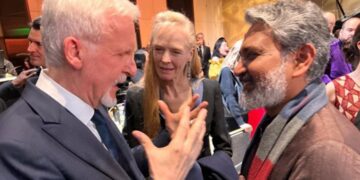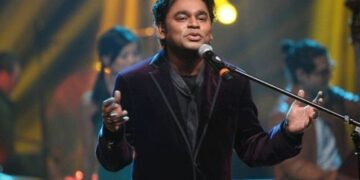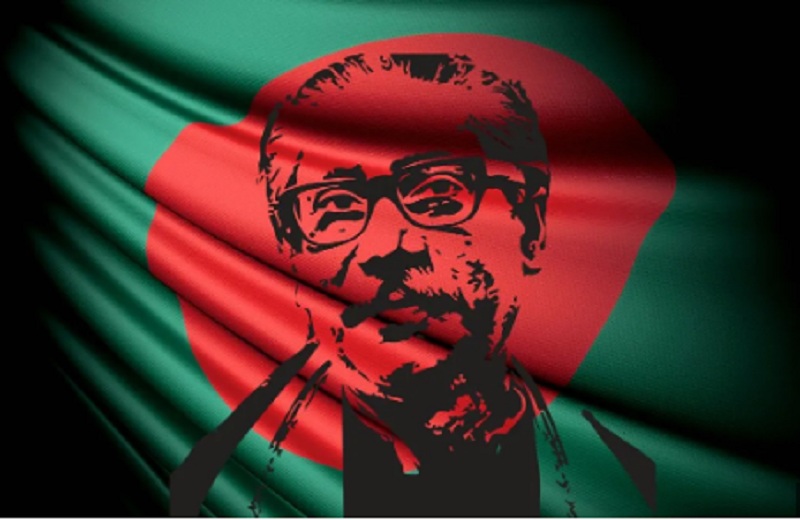On 8 January 1972, Sheikh Mujibur Rahman, Bangabandhu to his nation and founder of the People’s Republic of Bangladesh, arrived in London after nearly ten months of imprisonment in Pakistan following his release by the new Pakistan government headed by Zulfikar Ali Bhutto.
Bangabandhu was arrested by the military regime of General Yahya Khan in the early minutes of 26 March 1971 and flown secretly to what was then West Pakistan.
He was tried in a military court headed by a brigadier on the charge of waging war against Pakistan. Sometime in mid-November, a sentence of death was passed on him. It was the outbreak of direct armed conflict between India and Pakistan, plus the advances of the Mukti Bahini guerrillas in occupied Bangladesh, which clearly put the death sentence on hold.
Sheikh Mujibur Rahman returned home to Bangladesh on 10 January 1972. He took charge of the government, presiding over the new nation’s political fortunes for no more than three and a half years.
In the pre-dawn hours of 15 August 1975, he and most of his family were assassinated in a coup d’etat led by none other than his long-time political associate and commerce minister in his government at the time, Khondokar Moshtaq Ahmed.
Barely three months later, Mujib’s colleagues who had formed and led the provisional Bangladesh government, also known as the Mujibnagar government, during the War of Liberation — Syed Nazrul Islam, Tajuddin Ahmad, M. Mansoor Ali, A.H.M. Quamruzzaman — were murdered in Dhaka Central Jail, where they had been lodged since their arrest in August.
The assassinations of August-November 1975 were a first step in a systematic campaign to airbrush Bangabandhu out of Bangladesh’s history. What has been happening in the country since the fall of the Sheikh Hasina government on 5 August last year is only a renewed effort by his detractors to undermine, indeed wipe out, his legacy.
When a student-led agitation toppled Sheikh Hasina’s administration, the country swiftly passed into the control of elements whose loyalty to extremist right-wing elements opposed to Bangladesh’s emergence had always been a patent factor in the country’s politics.
Mobs went on a rampage, looting Ganobhaban, the prime minister’s official residence, and then torching Bangabandhu’s residence-cum-museum in Dhanmondi.
The home and museum, known to people as 32 Dhanmondi, had become a significant point of reference in history since it was from this place that Bangabandhu had spearheaded his political struggle for Bangladesh’s emancipation. It was also the spot where he and his family were assassinated in August 1975.
It has been a war against Bangabandhu, against his place in history which those who commandeered the state following his murder have waged. The very first move against Bangabandhu’s legacy was the promulgation of an indemnity ordinance by the usurper Moshtaq regime prohibiting any questioning of the crime committed on 15 August 1975.
The indemnity ordinance was then improbably inserted into the Fifth Amendment to the nation’s constitution by the military regime of General Ziaur Rahman in 1979. As a consequence, for the twenty-one years between August 1975 and June 1996 (until the return of the Awami League to power under Bangabandhu’s daughter Sheikh Hasina), no legal action was taken against Bangabandhu’s assassins.
In bizarre manner, the Zia regime sent off some of them to serve as diplomats at Bangladesh’s missions abroad. In the times of the country’s second military ruler, General Hussein Muhammad Ershad, some of the assassins were permitted to form a political party, with one of them becoming a candidate at the presidential election in 1988.
Sheikh Mujibur Rahman’s contributions were not mentioned when governments between 1975 and 1996 observed the anniversaries of Bangladesh’s liberation from Pakistan and of the formation of the Mujibnagar government in 1971.
While in the pre-1975 period, references were made in newspaper articles and radio and television programmes to the atrocities committed by the occupation Pakistan army in 1971, in the post-1975 era references to Pakistan were carefully struck out. Besides, the war against Bangabandhu was also waged in such spaces as the national slogan Joi Bangla.
This Bengali liberation call was replaced by the Pakistan-style ‘Bangladesh Zindabad’ and remained in the vocabulary of the military regimes of Zia and Ershad and the government of Zia’s widow Khaleda Zia.
Fears of Bangabandhu’s rootedness in Bengali political and cultural history have consistently driven his enemies into paroxysms of desperation. In present-day Bangladesh, the war against the Father of the Nation goes on. None of the men and women who currently happen to be part of the interim government has mentioned Bangabandhu in their public pronouncements.
They have not expressed any regret over the damage done to 32 Dhanmondi. Indeed, some of the young people in and around the regime have brazenly referred to Mujib as a fascist in much the same way they have been denigrating Sheikh Hasina as a fascist.
One of the students who not long ago was sworn in as an advisor in the interim government under the constitution shocked the country when, soon after his oath-taking, he pulled down Bangabandhu’s portrait from the hall at Bangabhaban, the presidential residence.
It did not matter that the constitution under which this young man and others of his colleagues were sworn in acknowledges, in the preamble, Bangabandhu as the embodiment of Bangladesh’s liberation. The observance of Bangabandhu’s freedom speech of 7 March 1971 and national mourning day on 15 August have been cancelled.
This new war against Bangabandhu Sheikh Mujibur Rahman will not end anytime soon. The reasons are only too obvious. The interim regime has formed a commission to study the ways and means by which reforms can be brought about in the existing constitution or a new constitution can be formulated to replace it.
The task of heading the commission has fallen on a Bangladeshi-American serving as an academic in the United States. This was despite the fact that eminent constitutional experts are there in good number in the country.
Besides, Dr Kamal Hossain, who served as Bangladesh’s first law minister and chairman of the parliamentary constitution-making committee in 1972, is yet around. One is not sure that he has been consulted on the issue.
The war on Bangabandhu goes on, in the silence of Bangladesh’s media on his contributions to the nation’s history. The Yunus regime means to remove Mujib’s image from currency notes. It is all a throwback to the loud silence which prevailed in the twenty-one years from 1975 to 1996.
Bangabandhu’s followers, both in the Awami League and in other professions, have either been on the run since 5 August 2024 or are lying low for fear of persecution. Attempts are being made through school textbooks to project Ziaur Rahman as the man who declared Bangladesh’s independence on 26 March 1971.
That is a deviation from the truth. Bangabandhu Sheikh Mujibur Rahman declared Bangladesh’s independence moments before he was arrested by the Pakistan army on 26 March. On the evening of the next day, 27 March, Ziaur Rahman, then a major in the Pakistan army, having revolted, announced Bangladesh’s independence from a radio station in Chittagong’s Kalurghat.
In his broadcast, Major Zia referred to Sheikh Mujibur Rahman as ‘our great national leader’ and ‘supreme commander’. He noted that he was speaking on behalf of Bangabandhu.
The Father of the Nation, his legacy, his long campaign for Bengali political rights in Pakistan, his repeated spells in jail and his leadership of the struggle for freedom are once again under assault by those who would deny history, turn it on its head.
ALSO READ: A brief history of Dhaka-Delhi interaction
It will be a long time, requiring patience and diligence and adherence to the political heritage of the country, for the truth to be restored in Bangladesh. As Bangabandhu once said before the tribunal trying him for treason in 1968, ‘One who wishes to be in Bangladesh will have to speak to Sheikh Mujibur Rahman.’
That truth holds as good today as it did all those decades ago.















